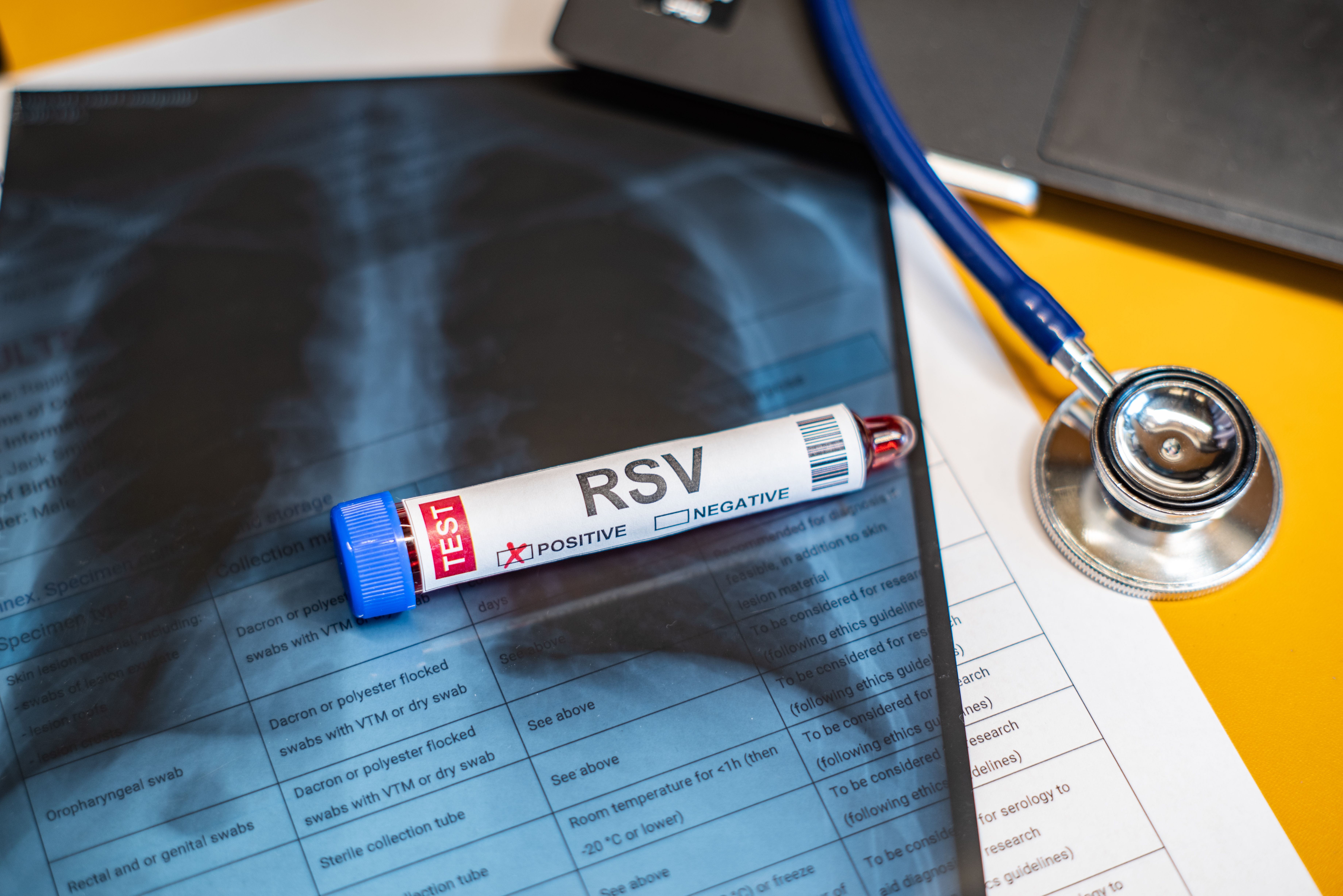- Center on Health Equity & Access
- Clinical
- Health Care Cost
- Health Care Delivery
- Insurance
- Policy
- Technology
- Value-Based Care
Adult RSV Hospitalizations: Clinical Characteristics, Risk Factors for Severe Outcomes
A new study highlights risk factors for hospitalization and severe illness among adults with respiratory syncytial virus (RSV) receiving care through the emergency department.
Respiratory syncytial virus (RSV) is a significant pathogen among adult patients admitted to the emergency department (ED), especially among those with underlying medical conditions, show findings from a new study.1
“This study aimed to investigate adult patients with symptomatic RSV infections in the ED of a German university hospital and their clinical course to evaluate the potential risk factors for inpatient treatment,” wrote the researchers of the study.
The observational cohort study is published in Medicine.
The study was conducted between October 1, 2022, and March 31, 2023. All adult patients 18 years and older presenting to a tertiary care ED underwent point-of-care polymerase chain reaction testing for RSV, COVID-19, and influenza. Symptomatic patients who tested positive for RSV were also included if they had at least 1 clinical symptom present upon arrival: malaise, dyspnea, cough, fever, headache, nausea, chest pain, sore throat, and myalgia.

Nasopharyngeal swabs were collected along with data of all patients who had RSV, which were obtained from electronic medical records. Patient data were further analyzed, including vital parameters, laboratory values, medical preconditions, and further diagnosis and treatment.
A total of 8050 patients were tested for RSV, COVID-19, and influenza. Of these patients, 157 (2%) tested positive for RSV, 490 (6.1%) tested positive for COVID-19, and 321 (4%) tested positive for influenza A/B. Coinfections were rarely observed. Furthermore, only 17 (10.8%) patients with RSV presented without any of the defined respiratory symptoms.
After exclusion, 35 patients with RSV were further analyzed. Of these patients, 120 (89%) reported malaise, 64 (47%) reported dyspnea, 56 (41%) reported cough, and 33 (24%) reported fever as their major complaint upon presentation.
Regarding medical preconditions as potential risk factors for inpatient treatment, 67 (50%) patients had arterial hypertension, 49 (36%) had cardiac disease, 44 (33%) had pulmonary disease, and 39 (29%) had tumors. Additionally, 14 (10%) patients were immunocompromised. Of these patients, 70 (51.8%) were prospective inpatients.
Inpatients with RSV were also significantly older and showed significantly more preconditions than outpatients.
Multivariate analysis revealed that malaise (OR, 8.4; 95% CI, 1.39-50.73; P = .021) and detection of pulmonary infiltrations (OR, 12.56; 95% CI, 3.61-43.68; P < .001) were the only independent predictors of inpatient treatment.
The researchers noted some limitations on their findings, including that all data were collected retrospectively from medical records, the study was conducted in a single center, and the primary reason for presentation was unclear in some cases, as was the specific reason for complaints.
Despite these limitations, the researchers believe the study findings show that older patients and those with certain preconditions carry a higher risk for severe RSV infection, in which inpatient treatment is often required. Furthermore, the researchers suggest RSV vaccination as a future strategy to reduce morbidity and mortality in this vulnerable patient population.
The CDC recommends that all adults 75 years and older, and adults aged 60 to 74 years who are at increased risk for severe RSV disease should receive a single dose of the RSV vaccine (Arexvy [GSK], Abrysvo [Pfizer], or mResvia [Moderna]).2
“Although the clinical picture seems similar to many common respiratory viruses, with malaise, cough, and dyspnea being the most common complaints in our cohort, the clinical course may even be more serious in this setting, with an inpatient rate of more than 50% in our group of ED patients,” wrote the researchers.1
References
1. Fistera D, Kramer CM, Manegold RK, et al. Adult patients with severe respiratory syncytial virus infections in the emergency department. Medicine (Baltimore). 2024;103(39):e39265. doi:10.1097/MD.0000000000039265
2. Steinzor P. Updated ACIP guidelines: RSV vaccine for adults aged 60 years and older. AJMC®. Published August 7, 2024. Accessed October 5, 2024. https://www.ajmc.com/view/updated-acip-guidelines-rsv-vaccine-for-adults-aged-60-years-and-older
The Breakdown: Breast Cancer Research Awareness Day
August 19th 2025Breast cancer is the second most common cancer among women and the second leading cause of cancer-related deaths among women in the US. In light of Breast Cancer Research Awareness Day, The American Journal of Managed Care® breaks down the most recent advancements in breast cancer prevention, screening, and therapies.
Listen
Politics vs Science: The Future of US Public Health
February 4th 2025On this episode of Managed Care Cast, we speak with Perry N. Halkitis, PhD, MS, MPH, dean of the Rutgers School of Public Health, on the public health implications of the US withdrawal from the World Health Organization and the role of public health leaders in advocating for science and health.
Listen
Cefdinir Nearly Doubles Outpatient Uncomplicated UTI Treatment Failure Compared With Cephalexin
November 11th 2025Cefdinir is linked to nearly double the outpatient uncomplicated UTI treatment failure of cephalexin, with higher recurrence and increased resistance to other cephalosporins.
Read More
